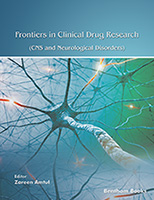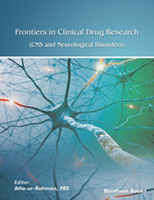Preface
American population is aging. The Census Bureau predicts that the nation will have more than 1 million centenarians in 2050, up from 71,000 today. The number of Americans afflicted with stroke, neurodegenerative diseases, and neuropsychiatric disorders is also increasing. These diseases are caused by acute or progressive loss of neurons resulting in brain dysfunction. Known risk factors for stroke, neurodegenerative diseases, and neuropsychiatric disorders include increasing age, genetic polymorphisms, endocrine conditions, oxidative stress, inflammation, excitotoxicity, hypertension, diabetes, infection, tumors, immune and metabolic conditions, and chemical exposure. According to the NINDS, approximately 50 million Americans are affected by stroke, neurodegenerative diseases and neuropsychiatric disorders each year. The number of people affected with above neurological disorders will double every 20 years, and will cost the U.S. economy billions of dollars each year in direct health care costs and lost opportunities. It is estimated that $100 billion per year is spent on Alzheimer disease alone. In addition to the financial costs, there is an immense emotional burden on patients, their relatives, and caregivers. It is also predicted as the number of senior citizens grows, costs to treat neurological disorders to the society will increase significantly.
Significant progress has been made on molecular aspects of neurodegeneration and neuroprotection in acute neural trauma and neurodegenerative diseases. This information is scattered throughout the literature in the form of original papers, reviews, and some edited books. The purpose of this E-book is to present readers with cutting edge and comprehensive information on molecular aspects of neurodegeneration and neuroprotection in a manner that is useful not only to students and teachers but also to researchers and physicians. This E-book has 11 chapters by leading researchers in the field of neurodegeneration and neuroprotection. Chapter 1, 2, and 3 describe neurochemical aspects of neuroinflammation and biomarkers for oxidative stress. Chapter 4 deals that molecular mechanism of kainic acid neurotoxicity in the brain. Chapter 5, 6, and 7 describe the involvement of mitochondrial signaling in Alzheimer disease and hypoxic injury, molecular aspects of dopamine-mediated neurodegeneration, and role of complement in neurodegeneration and neuroinflammation. Chapter 8 describes the role of platelet activating factor in neurological disorders. Chapter 9 provides information on pathogenesis of schizophrenia. Chapter 10 describes involvement of fatty acids and their metabolites in neuroprotection in brain, and finally chapter 11 deals with the perspective and directions for future development on various aspects of neurodegeneration and neuroprotection.
The writing style and demonstrated ability of various authors to present complicated information on neurodegeneration and neuroprotection makes this book particularly accessible to neuroscience graduate students, teachers, and fellow researchers. This E-book can be used as supplement text for a range of neuroscience courses. Clinicians and pharmacologists will find this book useful for understanding molecular basis of neurodegeneration in neurodegenerative diseases. Editors of this E-book have tried to ensure uniformity in the mode of presentation as well as a logical progression from one topic to another and have made sure that authors provide extensive referencing. Editors hope that their attempts to integrate and consolidate knowledge of molecular aspects of neurodegeneration and neuroprotection in neurological disorders will provide the basis for more dramatic advances and developments in signal transduction processes associated with molecular mechanisms of neurodegeneration and neuroprotection.
Akhlaq A. Farooqui
The Ohio State University
USA
&
Tahira Farooqui
The Ohio State University
USA









